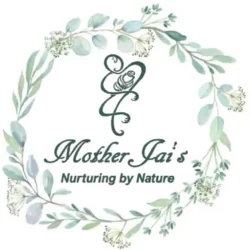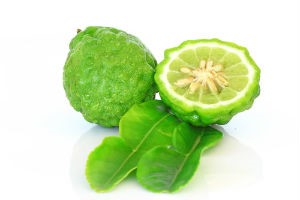
Mouth Breathing
You have two air passageways to your lungs, through the nose and the mouth. Healthy people use both their nose and their mouth to breathe. Breathing through the mouth ONLY becomes necessary when you have nasal congestion due to allergies or a cold and when you are exercising strenuously it can help get oxygen to your muscles faster. Breathing through your mouth all the time or even just when sleeping can lead to health problems.
Nasal breathing has been well documented to providing various benefits. The nose is equipped with a complex filtering mechanism which purifies the air we breathe before it enters the lungs. Breathing through the nose during expiration helps maintain lung volumes and so may indirectly determine arterial oxygenation.
Many of us are habitual mouth breathers, either in our daily life or when we are physically active or stressed out. For most of us, this habit began in childhood and not only diminishes our energy but also undermines our health and well-being.

Side Effects of Mouth Breathing
ADD/ADHD in Children: When tired children tend to overcompensate and speed up. For this reason, sleep deprivation is sometimes confused with ADHD in children. Children may also be moody, emotionally explosive, and/or aggressive as a result of sleepiness. Children with sleep problems were more likely to be inattentive, hyperactive, impulsive, and display oppositional behaviors.
Anxiety/Panic Attacks: Mouth breathing from the upper chest triggers the sympathetic nervous system, accelerating the heart rate and increasing blood pressure, stimulating our fight or flight response, hence the link with anxiety symptoms. If you’re prone to catching every bug going, often have a sore neck and shoulders, feel tired all the time, tend to have nasal congestion or suffer from anxiety and panic attacks, breathing from the upper chest and through the mouth could be the cause.
Asthma: insufficient carbon dioxide in our blood leads to the symptoms of asthma, various other breathing disorders, and even angina, as the body struggles to maintain the correct balance of oxygen and carbon dioxide. In order to keep the right balance in someone whose carbon dioxide level is too low the body automatically tries to increase the amount of carbon dioxide in the blood by constricting the airways, swelling tissues, secreting mucus, and so on, thus making it more difficult to quickly inhale and exhale large volumes of air.
Cancer Formation: mouth breathing leads to the oxygen and carbon dioxide imbalance in the body which leads to oxidation. Cellular oxidation is the cellular damage that leads to cancer. It is caused by the imbalance of oxygen in the system for cellular use and causes damage to cells during cellular reproduction. These damaged cells reproduce into tumors or cancer.
Enamel Erosion: breathing through your mouth cause over drying of teeth, thus weakening the tooth enamel. Our saliva cleans and protects tooth enamel. If your mouth is always open the saliva evaporates.
Facial Deformities: children who mouth breathe develop crooked teeth, facial deformities, gum disease, bad breath, and poor growth. Over time, children whose mouth breathing goes untreated may suffer from abnormal facial and dental development, such as long, narrow faces and mouths, gummy smiles, gingivitis and crooked teeth. The poor sleeping habits that result from mouth breathing can adversely affect growth and academic performance. Many of these children are misdiagnosed with attention deficit disorder (ADD) and hyperactivity.
Gum Disease: mouth breathing over dries the mouth and causes damage to gum tissues, leading to gingivitis. Our saliva cleans and protects gum tissue. If your mouth is always open the saliva evaporates.
Headaches: many mouth breathers have chronic headaches, shoulder and neck pain, and chronic fatigue. The imbalance of oxygen and carbon dioxide in the blood causes the flight or fight response in the body which over time stresses the muscles and joints especially of he neck and shoulders, leading to tension headaches. It also causes over secretion of adrenal hormones which then causes adrenal fatigue, which leads to headaches and chronic fatigue.
Hyperventilation: breathing excessively fast for the actual conditions in which we find ourselves. When we breathe through our mouth we usually inhale and exhale air quickly in large volumes, this can lead to hyperventilation. It is important to recognize that it is the amount of carbon dioxide in our blood that generally regulates our breathing. If we release carbon dioxide too quickly, the arteries and vessels carrying blood to our cells constrict and the oxygen in our blood is unable to reach the cells in sufficient quantity. This includes the carotid arteries, which carry blood (and oxygen) to the brain. The lack of sufficient oxygen going to the cells of the brain can turn on our sympathetic nervous system, our “fight or flight” response, and make us tense, anxious, irritable, and depressed.
Low Immunity: Mouth breathing makes us vulnerable to viruses and infections since the nose is essentially a sterilizing unit for anything airborne. It also means the tiny cilia, that are meant to clear away mucus, stop working properly, leading to a feeling of being “snotty” all the time.
Sleep Apnea: mouth breathing causes interruptions in breathing during sleep and dries out the tissues causing inflammation and mucous production that also interferes with breathing, especially at night while lying down.
Tooth Decay: mouth breathing dries the saliva in the mouth causing a decrease in pH (more acidic) in the mouth allowing for bacterial growth, plaque formation, and tooth decay.

How to Stop Mouth Breathing
Now it is not easy, but it is so worth it to train yourself to use your nose as it has evolved to be used. You will feel more energized every day, have fewer colds and allergies, and will get more oxygen in and carbon dioxide out. You will also reduce your risk of developing cancer by simply getting a better balance of oxygen and carbon dioxide in the blood.
So what is the perfect breath?
It should come from the lower chest and abdomen. An adult at rest ought to have a rate of about 10 to 14 breaths a minute, and exhalation should be longer than inhalation and finish with a short pause. Most importantly, breathing should be through the nose rather than the mouth.
One of the most important reasons for nasal breathing, is due to the production of nitric oxide (NO). NO exists in the human breath, but little is known about its site of origin or enzyme source. Most NO in normal human breath derives locally from the nose where it can reach high levels during breath-holding.
This molecule, produced in mammalian cells by specific enzymes and is believed to play a vital role in many biological events including regulation of blood flow, platelet function, immunity, and neurotransmission. Although this gas is produced in minute amounts, when it is inhaled through the nose into the lungs, it will follow the airstream to the lower airways and the lungs where it aides in increasing arterial oxygen tension; hence enhancing the lungs capacity to absorb oxygen. Nitric Oxide also plays an important role in reducing high blood pressure, maintaining homeostasis, immune defense and neurotransmission.
A SIMPLE PRACTICE
Here’s a simple, beneficial practice you can try. Over the next few days or weeks, see if you can observe and sense your breathing several times a day in the middle of your activities. Notice whether or not you are breathing through your mouth. Also notice how often you hold your breath. For some of you, mouth breathing or breath holding may be a frequent activity. For others, it may occur mainly in physically, emotionally, or mentally stressful situations. When you notice yourself breathing through your mouth or holding your breath, remind yourself to breathe through your nose and to stop holding your breath.
Simple Steps to Try
1. Practice: Breathe in through your nose and out through your mouth. What has probably stopped you from breathing correctly is not your lack of knowledge about breathing techniques. It’s more likely that you just need to be aware and to practice.
2. Clearing any nose blockage: It may seem obvious, but many people breathe through the mouth because their nose is blocked. By blowing your nose or using a nasal wash, you can clear your nasal passage of obstructions.
3. Stress Reduction: When people are stressed, their breathing is more rushed. You are more likely to use your mouth to take deep breaths during stressful situations. You may need to see a doctor or change your environment but reducing stress will help improve the way you breathe.
4. The right pillows: If you struggle with mouth breathing when you are sleeping, try changing the height of your head. Prop your head up with an extra pillow or use a thicker pillow.
5. Exercise: By exercising regularly with a regimen of a daily walk or run, you will increase your need for deep breaths; and your nose will naturally take the breathing away from your mouth.

















